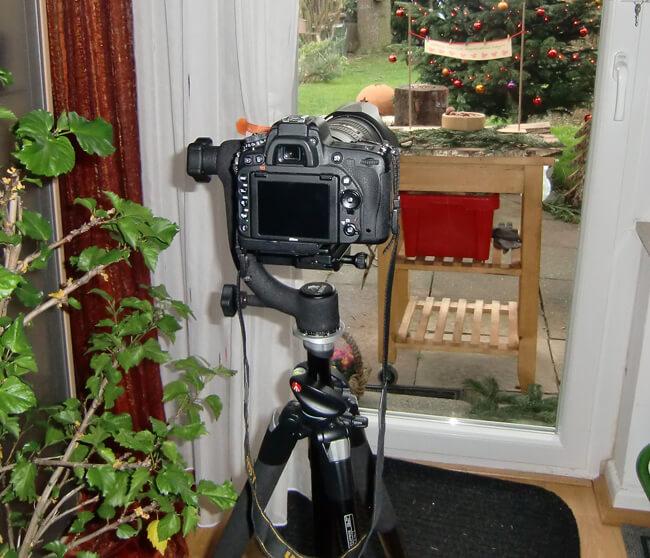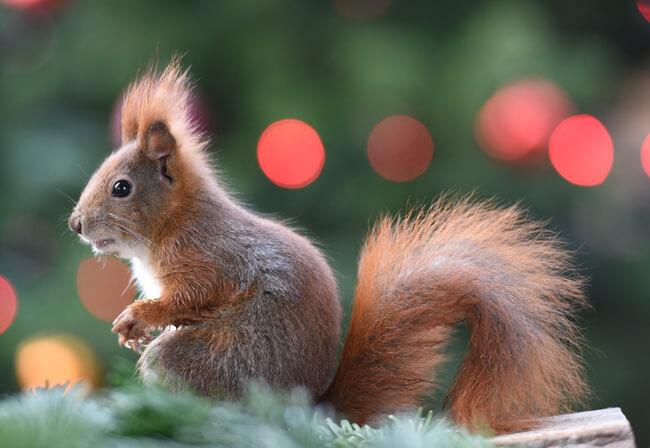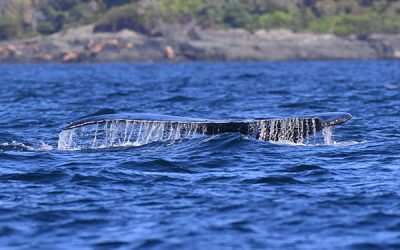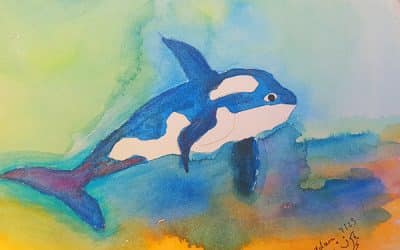How we photograph our squirrels. A little excursion into camera technology.
It would be much easier to photograph a book of vine snails. They don’t run away quite as fast… 😉
Basically, squirrels can be photographed reasonably well with any camera. Even smartphones take surprisingly good pictures if there is enough light and the distance is not too great. However, if the conditions are not optimal, a good camera is advantageous. It also gives you the option of shooting in RAW format and being able to use telephoto lenses.
There are three particular challenges to overcome when photographing squirrels and, of course, other wildlife:
Squirrels are feisty – a short exposure time is required, meaning little light hits the sensor
Squirrels are often at or on trees, i.e. little light here as well
Squirrels are often far away – a zoom or telephoto lens is needed – again little light
Camera technology
Getting nice results here requires a combination of the appropriate equipment and the right settings.
First a few lines about the equipment: We leave all the hype about certain brands aside. Almost no one can tell from a photo whether it was taken with a Nikon, a Canon, a Sony or a camera from another manufacturer. The differences between cameras in the same price range are not that great. Nobody builds a bad camera. Whether a picture works or not depends more on image composition and the right moment.
The most important thing is to get as much light as possible onto the sensor.
With the lively squirrels, you can’t always influence the optimal image composition. They have never adhered to our stage directions. But by observing their behavior, from which side they usually come to the feeding place and by placing the food carefully, you can already influence the composition of the picture.
Photographe, if it offers the camera, in the RAW mode! Only then all image information is available and can be changed much more extensively with an image editing program than in JPEG format. It is surprising what you can still get out of areas that are too dark, for example. It is generally better to underexpose an image.
Photographer’s rule: get closer!!! – image as large as possible.
In our culture, pictures are viewed from left to right. Therefore, it is optimal if the most exciting part of the picture is in the right third. And the animal looks into the picture, so towards the viewer.
Backgrounds should not distract but ideally support the actual object through an effective color scheme.
The imaging performance of the lens decreases when the aperture is fully open. The best sharpness is achieved around f/8.
If the squirrels are photographed at a specific location, it is very helpful to mount the camera on a tripod. Your arm muscles and back will thank you. For quick adjustment, a ball head is ideal. This allows the camera to be swiveled quickly in all directions. And with a quick-release plate, the camera can be detached from the tripod with a flick of the wrist when the situation calls for it. Even more ideal is a so-called gimbal head. There, the camera hangs freely on an L- or U-shaped angle and does not have to be clamped by a locking screw before the camera is released, as with the ball head. Very helpful – life experience 🙂
If one is faced with the decision to get a new high-quality camera, the consideration immediately comes up, single lens reflex (DSLR) or mirrorless system camera (DSLM). In many areas, the smaller and lighter system cameras have proven extremely successful. These are now available with sensors that are in no way inferior to those of SLR cameras. Nevertheless, there are some points that speak for the SLR cameras, especially in the field of wildlife photography. Especially the better handling with large and heavy telephoto lenses. In changing conditions, it is often necessary to quickly change the settings of aperture, shutter speed, ISO, focus range and exposure mode. On a large body, the buttons and dials are easier to reach without having to set the camera down. The optical viewfinder does not consume any power, unlike a monitor. This is clearly noticeable in the battery life when waiting for the object of desire for a longer time. The optical viewfinder is also superior to the viewfinder monitor in terms of contrast and in low light.
The SLR offers a faster autofocus and a higher number of continuous shots. Another argument is the larger selection of lenses, also from third-party suppliers.

Our SLR camera with tripod and gimbal head.
The most important functions can be changed via dials and buttons without having to scroll through a menu.
With system cameras, the sensor is always on, but that also means that it always wants to be supplied with power and gets warm. A warm sensor produces more noise, which is noticeable at higher ISO settings.
Although the performance of sensors has improved enormously in recent years, size still plays a decisive role. With the same number of pixels, more light falls on a sensor in 35mm format (36x24mm) than on a sensor in the so-called APS-C format (approx. 23x15mm). This leads to a clearer signal from the individual pixel, especially in low light, and thus to less image noise overall. However, since a longer focal length is required for the same image section in 35 mm format due to the changed angle of view, this effect is partially cancelled out.
But the best camera body is of no use if the lenses are no good. The system must fit together. In general, the smaller the f-number, the more light comes through the lens.
Per aperture step, this means a doubling of the light. This means that twice as much light passes through a lens with a starting aperture of 2.8 as through a lens with an aperture of 4. The individual steps in the aperture series 1 – 1.4 – 2 – 2.8 – 4 – 5.6 – 8 – 11 – 16 – 22 etc. show how the light doubles or halves with each step if you go in the reverse order.
You can counteract this effect by changing the exposure time. Again, the amount of light incident on the sensor changes by a factor of 2 with each step. In practice, this means for us that if we want to take a sharp picture of a fast squirrel and reduce the time from a 1/500 second to a 1/1000 second, the aperture must be opened a full stop from, say, f8 to f5.6 to get the same amount of light on the sensor.
However, as the aperture is opened, the depth of field also decreases, meaning that the area that is in focus becomes smaller. This is a nice stylistic device and is also often used in portrait and object photography. Object or model sharp, background blurred. This guides the eye to the object and the background is not distracting.

Large aperture, shallow depth of field: ISO sensitivity 640, shutter speed 1/200 sec, aperture f2.8




